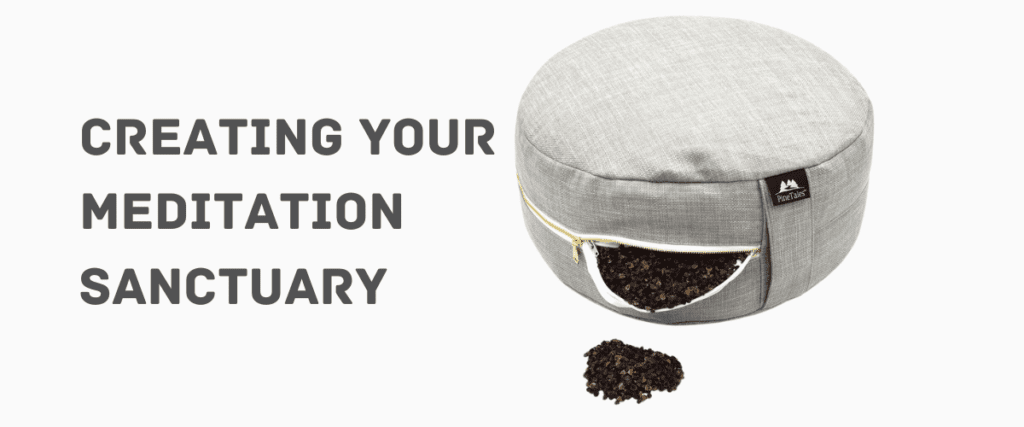To many, finding peace and tranquility in this fast-paced society has become more crucial than ever. Meditation offers a serene escape from the daily hustle, allowing people to reconnect with themselves and their world. However, the environment in which people meditate can significantly influence their practice’s effectiveness.
This essential guide will walk you through creating your meditation sanctuary, a dedicated space to unwind, reflect, and grow spiritually. Read on to learn more!
-
Choosing the right location
The first step in creating your meditation sanctuary is selecting the correct location. This place should be a quiet, undisturbed area in your home where you can relax without interruptions and move comfortably when needed. Here are some suggestions for ideal locations within a house to set up your meditation sanctuary:
- Dedicated meditation room: If space allows, dedicating an entire room to your meditation practice is ideal.
- A quiet corner of a room: If you have limited space, finding a quiet corner in a bedroom, living room, or home office can be sufficient.
- Home office: Incorporating a meditation space within your home office can provide a convenient escape from work-related stress.
- Garden or balcony: Nature inherently promotes tranquility and mindfulness. Consider creating an outdoor meditation space if you have a garden or a patio.
- Sunroom or enclosed porch: These areas offer natural light and a connection to the outdoors while still being protected from the elements.
- Library or reading nook: If you have a space dedicated to reading, it can double as a meditation area. The presence of books and the quiet atmosphere inherent to reading nooks make them ideal for contemplation and meditation.
Whether it’s a small corner of your bedroom, a dedicated room, or even a peaceful spot in your garden, the key is to find a space that feels right for you.
-
Setting the atmosphere
Once you’ve chosen your location, it’s time to set the atmosphere. Lighting plays a crucial role in creating a calming environment. Soft, warm lights or natural sunlight can help soothe your mind and prepare it for meditation. A salt lamp, dimmable lights, or even candles can provide a soothing glow that encourages relaxation.
Adding elements of nature, such as plants or a small water fountain, can also enhance the sense of tranquility in your sanctuary. Choose low-maintenance indoor plants that thrive in the lighting conditions of your meditation space.
-
Comfort is key
Comfort should be at the forefront of your meditation space. A round meditation pillow is a perfect addition to your sanctuary. These pillows are designed to provide the support and comfort needed during meditation, allowing you to sit for more extended periods without discomfort.
The round shape promotes better posture and alignment, facilitating a more profound, focused meditation experience. Choose a pillow that resonates with your personal style and adds to the aesthetic of your sanctuary.
For those who incorporate yoga into their meditation practice, a yoga mat can provide a soft, supportive surface for both sitting and physical poses. Meanwhile, a soft blanket or shawl can warm and comfort during cooler days or longer meditation sessions.
-
Incorporating elements for focus
Consider incorporating elements that aid focus and concentration to personalize your sanctuary further. Crystals for meditation have become increasingly popular due to their calming energies and ability to enhance spiritual awareness.
Each crystal has unique properties; for instance, amethyst promotes tranquility and inner peace, while clear quartz enhances clarity and thought. Placing these crystals around your meditation space can help create a more focused and enriched meditative experience.
-
Sound and scent
The auditory and olfactory senses can significantly impact your meditation practice. Gentle, soothing sounds, such as chimes or soft music, can help drown out the outside world’s noise, guiding you into a deeper state of relaxation. For instance, items like Tibetan singing bowls, chimes, or a small gong can be used at the beginning or end of a meditation session to signal the start or completion of your practice.
Similarly, incorporating natural scents through essential oils or incense can promote a calming atmosphere, making it easier to let go of stress and immerse yourself in meditation. Aromatherapy can play a significant role in setting the mood for this activity. An incense holder for traditional incense sticks or a diffuser for essential oils might be helpful.
-
Personal touches
Finally, add personal touches that make the space uniquely yours. This could be anything from inspirational quotes, favorite art pieces, or personal mementos that inspire peace and serenity. Moreover, mandalas, tapestries, or other artworks that evoke peace and contemplation can enhance the visual appeal of your meditation corner.
Your meditation sanctuary reflects your inner self, so personalize it to support your meditation journey best.
Aside from the above, you can also add practical furnishings. For instance, if you read spiritual texts or meditation guides as part of your practice, a book stand can be helpful, making it easier to read without straining your neck or hands. These furnishings and items can transform a simple corner of your home into a serene meditation sanctuary tailored to your personal preferences and style.
Conclusion
Creating your meditation sanctuary is a beautiful journey toward self-discovery and spiritual growth. By carefully selecting the location, setting the atmosphere, ensuring comfort with items like a round meditation pillow, incorporating focus elements like crystals for meditation, and personalizing the space, you’ll build a haven to explore the depths of your mind and soul. Remember, your sanctuary is a work in progress, evolving as you do, so feel free to adjust and enhance it as your practice grows.
People Also Read:
- Harnessing the Power of a Customised Yoga Retreat
- 5 Ways To Overcome Your Fear of Swimming With a Stoma
- Tips and Approaches of Treating a Flu
- Try These 7 Mental Health Habits

